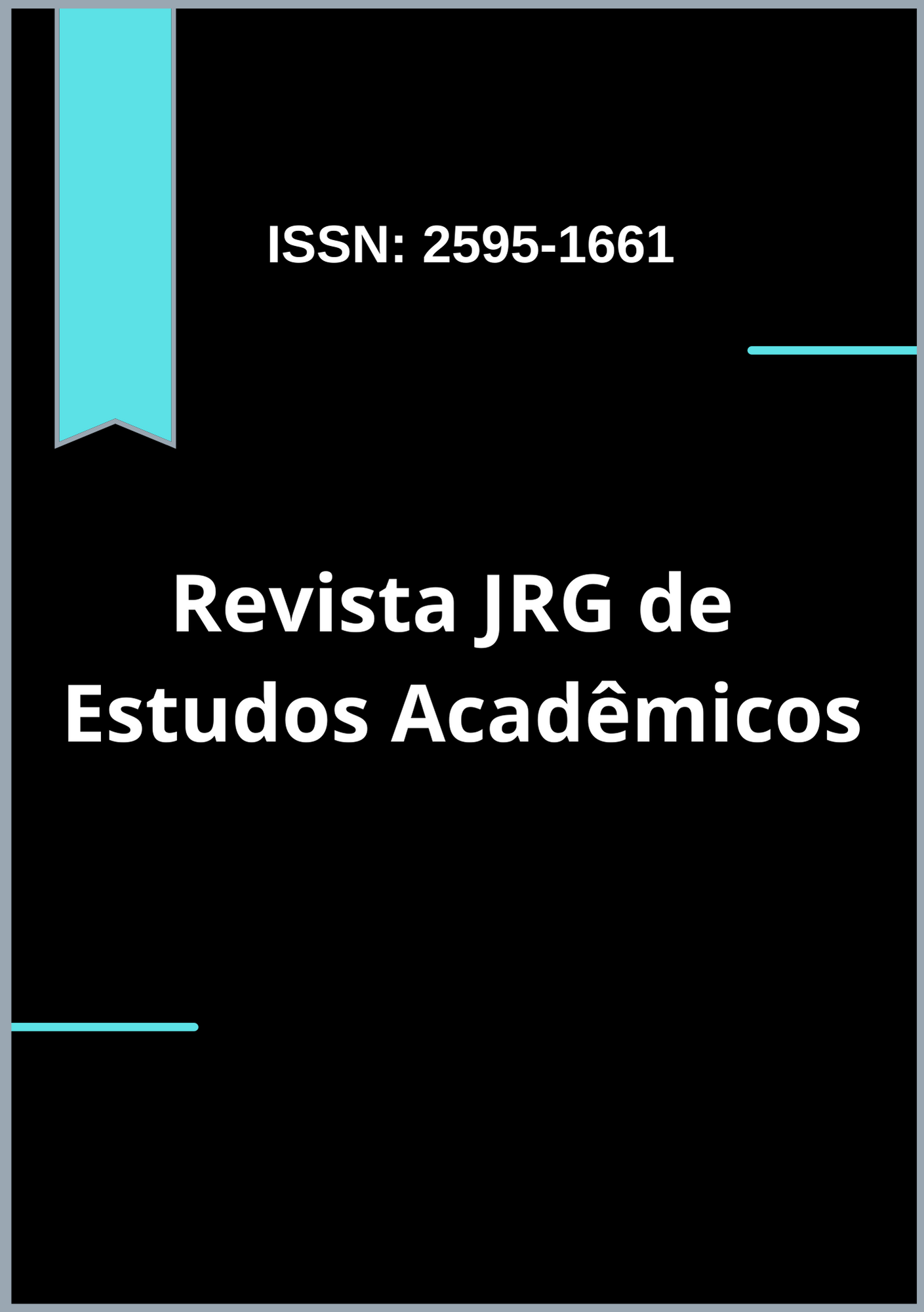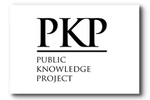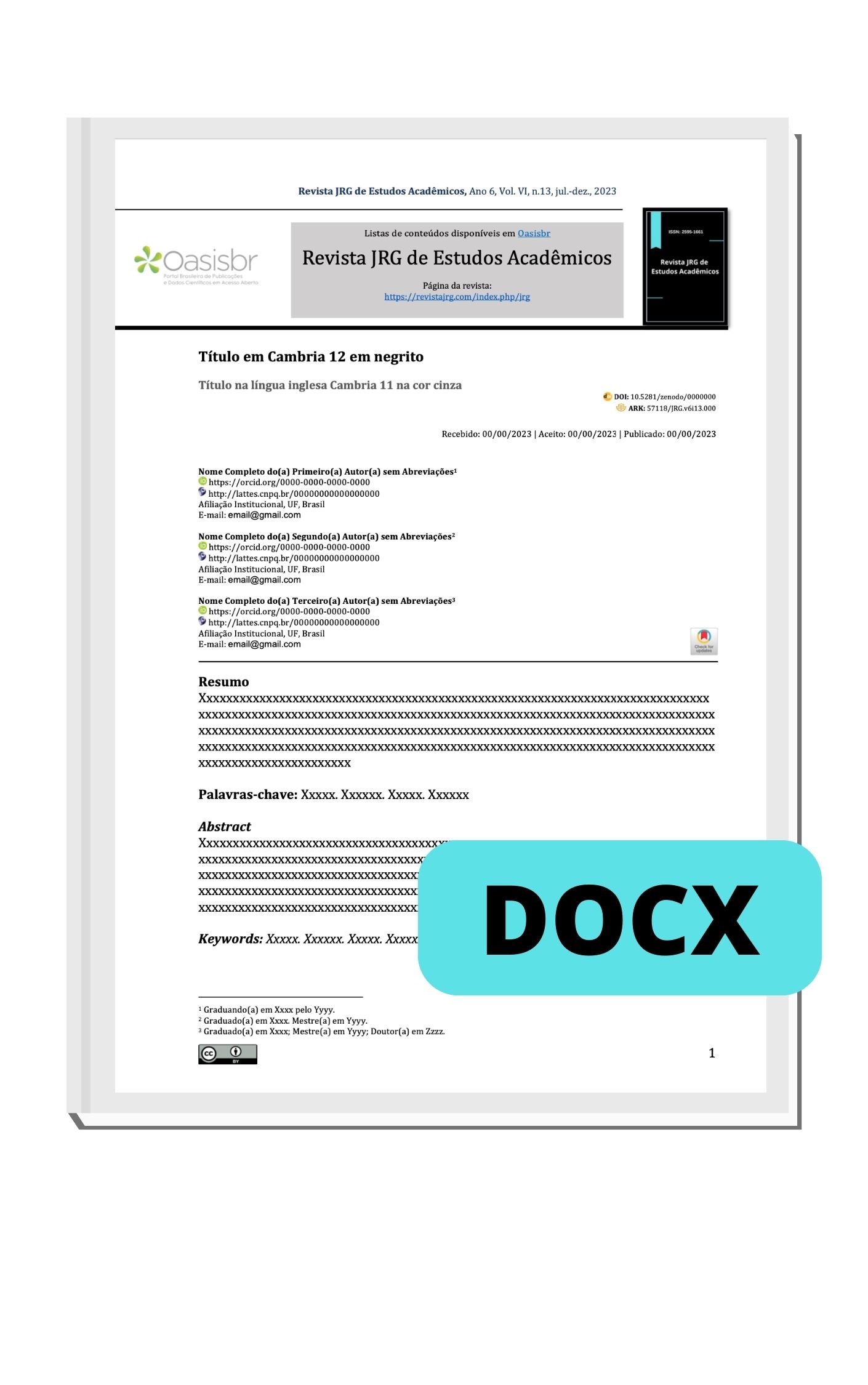Bacterial biofilms: impact on antimicrobial resistance and clinical implications
DOI:
https://doi.org/10.55892/jrg.v8i19.2575Keywords:
Bacterial biofilm, Antimicrobial Resistance, quorum sensing, chronic infections, antibiofilm therapeutic strategiesAbstract
This study addresses the topic of bacterial biofilms and their relationship with antimicrobial resistance, emphasizing the clinical implications arising from this phenomenon. Biofilm formation is a natural process in which bacteria adhere to surfaces and produce a protective extracellular matrix, providing greater tolerance to external factors, including the immune system and antibiotic action. The main objective of this study is to understand how bacterial biofilms contribute to antimicrobial resistance and to analyze their implications for the treatment of infections associated with medical devices and chronic diseases. The research was conducted through a narrative literature review, based on scientific articles and updated academic sources, addressing biofilm formation, the resistance mechanisms they confer to bacteria, and emerging therapeutic strategies. In addition, the study includes an assessment of the clinical implications of these infections, highlighting the role of innovative approaches such as quorum sensing inhibitors and enzyme-based therapies. It is concluded that a deeper understanding of bacterial biofilms is essential for the development of new antimicrobial strategies capable of overcoming resistance and improving the effectiveness of clinical treatments, representing a significant advance for public health and for the management of persistent infections.
Downloads
References
ALI, Asghar et al. Biofilmes microbianos: aplicações, consequências clínicas e terapias alternativas. Microorganisms , v. 11, n. 8, p. 1934, 2023.
ALIANE, Samia; MELIANI, Amina. Biofilmes bacterianos: formação, vantagens para os membros da comunidade, implicações clínicas e resistência a antibióticos. Environmental & Experimental Biology , v. 19, n. 3, 2021
CHONG, K. K. et al. Quorum sensing and its inhibition: novel strategies for fighting biofilm infections. Microorganisms, v. 4, n. 1, p. 18, 2016.
COSTERTON, J. W. et al. Bacterial biofilms in nature and disease. Annual Review of Microbiology, v. 53, p. 711-730, 1999.
DONLAN, R. M. Biofilms: microbial life on surfaces. Emerging Infectious Diseases, v. 8, n. 9, p. 881-890, 2002. DOI: 10.3201/eid0809.020063.
DUAN, K., et al. (2020). Quorum sensing in bacterial biofilms: an overview of mechanisms and strategies to inhibit biofilm formation. Journal of Microbial & Biochemical Technology, 12(3), 59-71.
DUTT, Yogesh et al. A associação entre formação de biofilme e resistência antimicrobiana com possíveis abordagens biorremediais engenhosas. Antibióticos, v. 11, n. 7, p. 930, 2022.
ELFADADNY, Ahmed et al. Resistência antimicrobiana de Pseudomonas aeruginosa: explorando impactos clínicos, tendências atuais de resistência e inovações em terapias inovadoras. Frontiers in microbiology, v. 15, p. 1374466, 2024.
FANG, Y. et al. Environmental influences on biofilm formation and resistance. Journal of Microbial Pathogenesis, v. 13, n. 5, p. 145-151, 2020.
FLEMMING, H.-W. et al. Biofilms: understanding the structure and contribution towards antimicrobial resistance. ScienceDirect, 2023.
GUZMÁN, L. M., et al. (2017). Role of quorum sensing in biofilm formation and antimicrobial resistance. Environmental Microbiology, 19(10), 3978-3987.
HASSAN, S. M. et al. Impact of biofilm formation on antibiotic resistance. Frontiers in Microbiology, v. 10, p. 789, 2022.
HEIDARY, Mohsen et al. Mecanismo de ação, resistência, sinergismo e implicações clínicas da azitromicina. Journal of Clinical Laboratory Analysis , v. 36, n. 6, p. e24427, 2022.
KAUSHIK, Ashlesha et al. Infecções por Staphylococcus aureus resistente à meticilina (MRSA) em humanos que produzem biofilme: implicações clínicas e manejo. Pathogens , v. 13, n. 1, p. 76, 2024.
KOO, H. et al. Biofilm formation in the oral cavity and its clinical implications. Journal of Applied Microbiology, v. 123, n. 5, p. 963-973, 2017.
LITTLE, William; BLACK, Caroline; SMITH, Allie Clinton. Implicações clínicas dos efeitos do sinergismo polimicrobiano na suscetibilidade antimicrobiana. Pathogens , v. 10, n. 2, p. 144, 2021.
LIU, Ho Yu; PRENTICE, Emma L.; WEBBER, Mark A. Mecanismos de resistência antimicrobiana em biofilmes. npj Antimicrobianos e Resistência, v. 2, n. 1, p. 27, 2024.
LIU, S. et al. Quorum sensing in biofilms: implications for infection control and treatment. Journal of Antimicrobial Chemotherapy, v. 76, n. 2, p. 312-320, 2021.
MAH, T. F.; O'TOOLE, G. A. Mechanisms of biofilm resistance to antimicrobial agents. Trends in Microbiology, v. 9, n. 1, p. 34-39, 2001.
SCHULZE, Adina et al. Biofilmes de patógenos bacterianos humanos: relevância clínica - desenvolvimento, composição e regulação - estratégias terapêuticas. Microbial Cell, v. 8, n. 2, p. 28, 2021
TAPIAINEN, T. et al. Biofilm-related infections: clinical implications and therapeutic challenges. Journal of Clinical Microbiology, v. 46, n. 4, p. 1150-1156, 2008.
TSHIBANGU-KABAMBA, Evariste; YAMAOKA, Yoshio. Infecção por Helicobacter pylori e resistência a antibióticos — da biologia às implicações clínicas. Nature Reviews Gastroenterology & Hepatology , v. 18, n. 9, p. 613-629, 2021.
ZHANG, L. et al. Biofilms as potential reservoirs of antimicrobial resistance. Frontiers in Public Health, v. 12, p. 156, 2024.
ZHAO, Y. et al. Biofilm formation and resistance to antimicrobial agents in clinical isolates of Pseudomonas aeruginosa from cystic fibrosis patients. Pathogens, v. 10, n. 6, p. 426, 2021.
ZONG, Z. et al. Biofilm-associated infections and therapeutic strategies. International Journal of Molecular Sciences, v. 19, n. 3, p. 758, 2018. ALI, Asghar et al. Biofilmes microbianos: aplicações, consequências clínicas e terapias alternativas. Microorganisms , v. 11, n. 8, p. 1934, 2023.
ALIANE, Samia; MELIANI, Amina. Biofilmes bacterianos: formação, vantagens para os membros da comunidade, implicações clínicas e resistência a antibióticos. Environmental & Experimental Biology , v. 19, n. 3, 2021
CHONG, K. K. et al. Quorum sensing and its inhibition: novel strategies for fighting biofilm infections. Microorganisms, v. 4, n. 1, p. 18, 2016.
COSTERTON, J. W. et al. Bacterial biofilms in nature and disease. Annual Review of Microbiology, v. 53, p. 711-730, 1999.
DONLAN, R. M. Biofilms: microbial life on surfaces. Emerging Infectious Diseases, v. 8, n. 9, p. 881-890, 2002. DOI: 10.3201/eid0809.020063.
DUAN, K., et al. (2020). Quorum sensing in bacterial biofilms: an overview of mechanisms and strategies to inhibit biofilm formation. Journal of Microbial & Biochemical Technology, 12(3), 59-71.
DUTT, Yogesh et al. A associação entre formação de biofilme e resistência antimicrobiana com possíveis abordagens biorremediais engenhosas. Antibióticos , v. 11, n. 7, p. 930, 2022.
ELFADADNY, Ahmed et al. Resistência antimicrobiana de Pseudomonas aeruginosa: explorando impactos clínicos, tendências atuais de resistência e inovações em terapias inovadoras. Frontiers in microbiology , v. 15, p. 1374466, 2024.
FANG, Y. et al. Environmental influences on biofilm formation and resistance. Journal of Microbial Pathogenesis, v. 13, n. 5, p. 145-151, 2020
FLEMMING, H.-W. et al. Biofilms: understanding the structure and contribution towards antimicrobial resistance. ScienceDirect, 2023.
GUZMÁN, L. M., et al. (2017). Role of quorum sensing in biofilm formation and antimicrobial resistance. Environmental Microbiology, 19(10), 3978-3987.
HASSAN, S. M. et al. Impact of biofilm formation on antibiotic resistance. Frontiers in Microbiology, v. 10, p. 789, 2022.
HEIDARY, Mohsen et al. Mecanismo de ação, resistência, sinergismo e implicações clínicas da azitromicina. Journal of Clinical Laboratory Analysis , v. 36, n. 6, p. e24427, 2022.
KAUSHIK, Ashlesha et al. Infecções por Staphylococcus aureus resistente à meticilina (MRSA) em humanos que produzem biofilme: implicações clínicas e manejo. Pathogens , v. 13, n. 1, p. 76, 2024.
KOO, H. et al. Biofilm formation in the oral cavity and its clinical implications. Journal of Applied Microbiology, v. 123, n. 5, p. 963-973, 2017.
LITTLE, William; BLACK, Caroline; SMITH, Allie Clinton. Implicações clínicas dos efeitos do sinergismo polimicrobiano na suscetibilidade antimicrobiana. Pathogens , v. 10, n. 2, p. 144, 2021.
LIU, Ho Yu; PRENTICE, Emma L.; WEBBER, Mark A. Mecanismos de resistência antimicrobiana em biofilmes. npj Antimicrobianos e Resistência , v. 2, n. 1, p. 27, 2024.
LIU, S. et al. Quorum sensing in biofilms: implications for infection control and treatment. Journal of Antimicrobial Chemotherapy, v. 76, n. 2, p. 312-320, 2021.
MAH, T. F.; O'TOOLE, G. A. Mechanisms of biofilm resistance to antimicrobial agents. Trends in Microbiology, v. 9, n. 1, p. 34-39, 2001.
SCHULZE, Adina et al. Biofilmes de patógenos bacterianos humanos: relevância clínica - desenvolvimento, composição e regulação - estratégias terapêuticas. Microbial Cell , v. 8, n. 2, p. 28, 2021
TAPIAINEN, T. et al. Biofilm-related infections: clinical implications and therapeutic challenges. Journal of Clinical Microbiology, v. 46, n. 4, p. 1150-1156, 2008.
TSHIBANGU-KABAMBA, Evariste; YAMAOKA, Yoshio. Infecção por Helicobacter pylori e resistência a antibióticos — da biologia às implicações clínicas. Nature Reviews Gastroenterology & Hepatology , v. 18, n. 9, p. 613-629, 2021.
ZHANG, L. et al. Biofilms as potential reservoirs of antimicrobial resistance. Frontiers in Public Health, v. 12, p. 156, 2024.
ZHAO, Y. et al. Biofilm formation and resistance to antimicrobial agents in clinical isolates of Pseudomonas aeruginosa from cystic fibrosis patients. Pathogens, v. 10, n. 6, p. 426, 2021.
ZONG, Z. et al. Biofilm-associated infections and therapeutic strategies. International Journal of Molecular Sciences, v. 19, n. 3, p. 758, 2018.











































